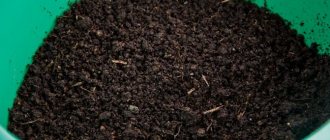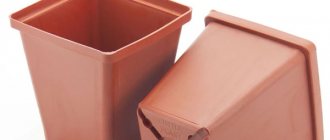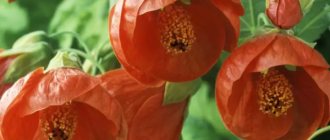Sportability of the variety
Children obtained from Arapaha leaf cuttings can produce sports - this is the difference between violets and the varietal description.
Arapaha sports are not at all resilient and may revert to varietal color.
Arapaha Sports has :
- Red-burgundy flowers with chaotic bright white spots;
- White flowers with burgundy spots or core.
ADVICE! The fixation of sports is carried out by propagating it from leaf cuttings or stepson.
Features of flowering, growth and reproduction
Development at home
Under good conditions, violets will delight you with good flowering.
Arapaha is an unpretentious violet; with proper care, it develops quickly and blooms almost without stopping. With timely transplantation and rejuvenation, the plant can live in the house for a long time.
How long does it take to grow an adult plant?
Violet babies grow up very quickly, much faster than other varieties. Under favorable conditions, the plant will bloom in less than 6 months after planting; under unfavorable conditions, flowering can wait up to a year.
How are varietal characteristics transmitted?
Varietal violet Arapaha is propagated by two methods :
- Stepchildren;
- Or leaf cuttings.
The stepsons growing in the axils of the leaves completely repeat all the varietal characteristics of the plant .
Children obtained from the leaf often give sports .
Nuances of flowering
The first flowering is almost always not abundant - 2-3 peduncles.
During subsequent flowering, the violet is simply strewn with flowers , which gradually change color saturation, turning from red to dark burgundy.
If you do not create the appropriate conditions for keeping the violet, then white inclusions may appear in the red color of the flowers.
What do flower stalks look like?
Saintpaulia has quite strong peduncles.
Peduncle variety:
- Sturdy;
- Quite long.
Arapah's flowers are quite large, reaching 6 cm in diameter .
Is it possible to achieve cap flowering?
To form cap blooms in violets, you need an ideal rosette , not too dense to allow the emerging flower stalks to pass through. Arapaha is ideal for conditions of cap flowering; it forms the necessary correct rosette. Its elongated leaves freely allow flower stalks to pass through.
If the correct maintenance conditions , usually from the second flowering Arapaha independently, without any outside measures, begins to bloom with a cap.
If in the second flowering of the plant it was not possible to achieve cap flowering, then the conditions of maintenance need to be reconsidered .
IMPORTANT! If 2-3 peduncles appear on a flower, they need to be removed for the further development of more peduncles.
Bud lifespan
The Arapaha rosette is even, blooms often and profusely . Violet can bloom continuously for up to a year.
Caring for a plant at home
Conditions of detention
Arapaha is unpretentious in care . You can enjoy the flowering of a plant for a very long time by providing it with the appropriate conditions:
- Proper watering;
- Timely feeding;
- Optimal lighting;
- Temperature and humidity;
- Correct soil and pot;
- Timely transplantation.
Proper watering and fertilizing
When watering violets, you need to find a “golden mean” - try not to dry out or overwater the plant. The frequency of watering is as the top layer of soil dries out.
The Arapaha variety prefers two watering methods :
- On top of the edge of the pot;
- Or wick watering.
Which method to choose depends on the preferences of the particular plant . You can try both methods and choose the best one.
Violets must be watered very carefully.
CAREFULLY! Regardless of the watering method, water should not be allowed to get on the flowers and leaves.
Arapaha needs periodic feeding . The plant is fed with complex fertilizer, which contains:
- Nitrogen;
- Potassium;
- And phosphorus.
It is important not to oversaturate the violet with fertilizers , this will negatively affect flowering.
Lighting and temperature
The variety requires more :
- Ordinary light;
- And the length of daylight hours.
Otherwise, it will produce long petioles and few peduncles, and the color of the flowers will be less saturated.
Violets do not tolerate heat well . Favorable room temperature should be maintained at 20-24 degrees.
Arapaha does not tolerate drafts . Sudden temperature changes will also be detrimental to it.
Air humidity
Arapaha does not tolerate dry air well . The optimal humidity for violets is 50%. In conditions of low humidity, it is necessary to provide additional moisture.
What soil and pots do you prefer?
For planting, it is preferable to use plastic pots , the size of which corresponds to the general rule for their selection - 1/3 of the diameter of the rosette.
This variety is best planted in a plastic pot.
First of all, you need to put drainage - small or medium expanded clay.
The plant is grown in light soil with a slightly acidic reaction. The soil must have sufficient water and breathability and looseness. For 1 package of purchased soil the following is added:
- 1 cup each of coco peat, perlite, vermiculite;
- 1 teaspoon each of dry fertilizer and charcoal.
Pruning and hygiene
The variety is prone to forming many stepsons . It is important to promptly remove side rosettes (stepchildren), which interfere with abundant and long-lasting flowering, taking away some of the nutrients.
Violets need to trim dry and old leaves.
Reproduction methods
The variety is propagated in two ways :
- Stepchildren, which form in large quantities on the rosette;
- Leaf cuttings.
Transplant rules, rejuvenation
For constant and lush flowering, violets are replanted at least once a year .
whose stems have become exposed must be replanted .
The following plants require emergency transplantation :
- Damaged by diseases and pests;
- Flooded or overdried.
ATTENTION! When replanting, you need to be especially careful; the variety has long petioles and leaves that are too brittle.
The best season for transplanting is spring .
The transplant is carried out in one of two ways :
- Deepening the stem into the ground;
- Or by rooting a cut trunk in water or soil.
The difference in the method of transplantation is only in the length of the bare stem .
Reviews
speak very . Here are some reviews from violet lovers.
Olesya. “It has a rich blood-red hue, is not capricious, has an even rosette, and blooms frequently and abundantly.”
Bright burgundy flowers attract the attention of many gardeners.
Antonina. “A good variety - it loves to bloom, the flowers are large, bright, the leaves lie evenly, it reproduces without problems.”
Valentine. “The color of the flowers is simply extraordinary, the flowers last a very long time, the color does not fade or fade, but rather becomes denser over time. Peduncles are very strong. The rosette forms itself, smooth, compact.”











